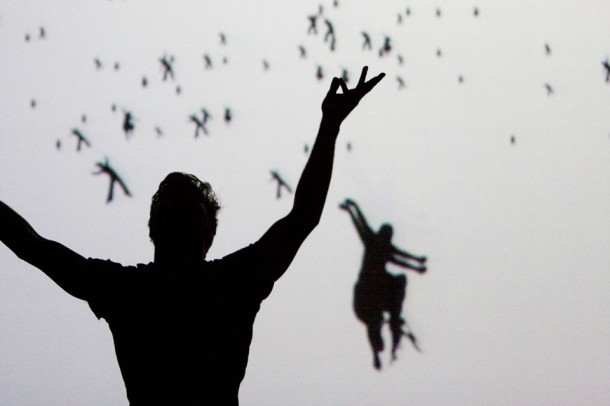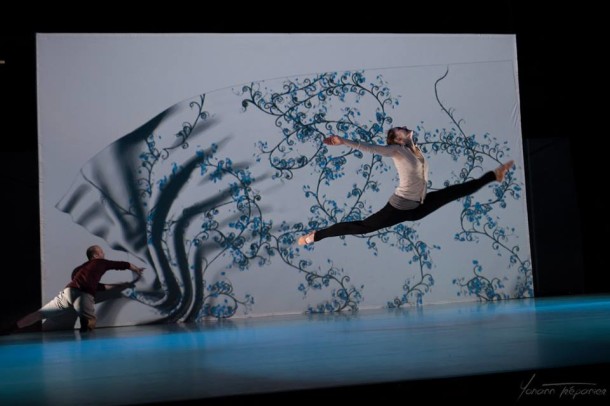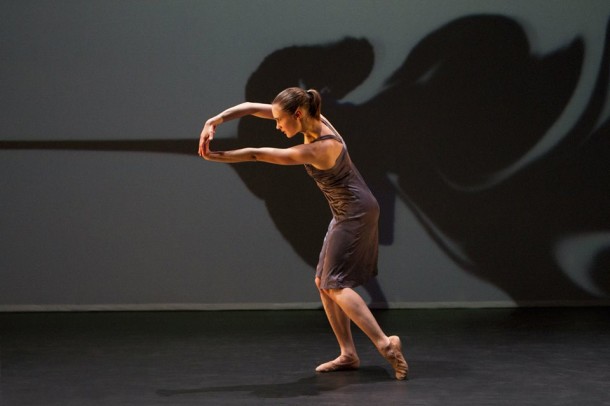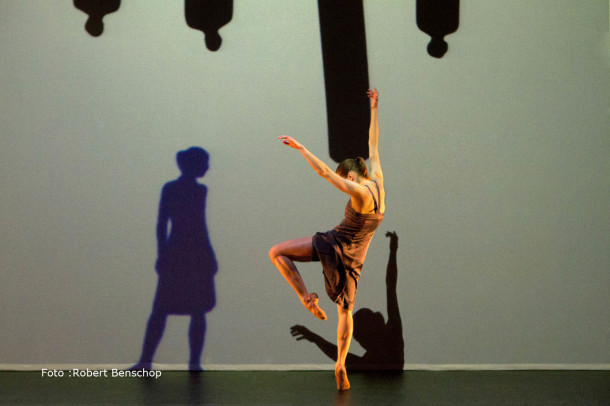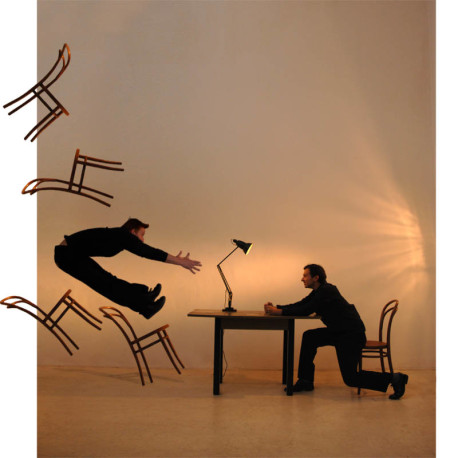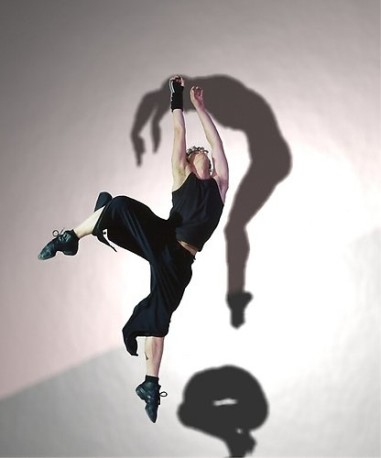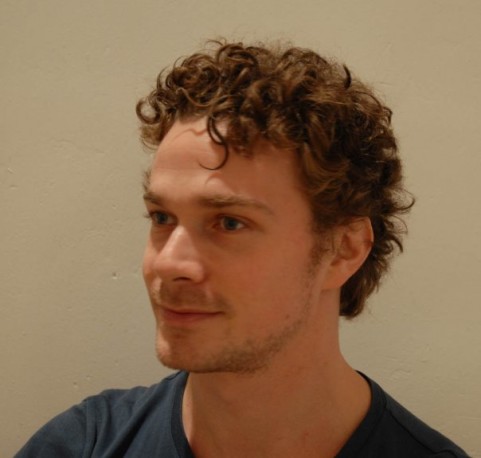David Middendorp: danza e tecnologia in perfetto equilibrio.
Coreografo e digital designer, l’olandese David Middendorp crea spettacoli che integrano danza, tecnologia e multimedialità. “La danza non è mai stata libera dalla tecnologia. Le scarpette da punta, ad esempio, sono la tecnologia di un tempo. Molte persone percepiscono la tecnologia come una cosa fredda. Io credo che sia la cosa che ci separa dalla maggior parte degli altri animali. E’ ciò che ci rende umani. E può essere usata molto bene per aiutare ad esprimere le emozioni umane, concetti e storie”.
“A volte mi trovo a coreografare i movimenti dei ballerini, altre quelli dei pixel. Attraverso l’uso della tecnologia possiamo accelerare le nostre capacità: possiamo essere più veloci, più forti, più belli e intellettualmente molto carichi e potenti. La questione è: come dobbiamo affrontare tutto questo potere?”.
Sono le parole di David Middendorp, autore di diversi balletti in cui la tecnologia ha un ruolo centrale, sia dal punto di vista tematico sia per l’uso che ne fa durante le performance. Il coreografo olandese, lo scorso anno, si è fatto conoscere in tutto il mondo nella nona edizione di America’s Got Talent. Il suo Blue Journey, mix suggestivo di danza, musica e animazioni video, arriva in finale nel talent show, ricevendo milioni di visualizzazioni e condivisioni sui social network.
La tecnologia e la multimedialità sono elementi importanti nei lavori di David, che individua similitudini tra danza e animazioni interattive, tanto da dichiarare di trovarsi a coreografare “a volta movimenti per ballerini, a volta movimenti per pixel”.
Obiettivo dei suoi lavori è rendere la parte multimediale pari alla coreografia integrandola in questa, in modo da supportarsi a vicenda, senza far prevalere l’una o l’altra. Per tradurre, in tempo reale, il messaggio che il coreografo e il danzatore cercano di trasmettere.
L’artista inizia la sua storia studiando danza al Royal Conservatory dell’Aja, poi alla Rotterdam Dance Academy e alla Juilliard School of Dance di New York. Entra a far parte della compagnia Introdans e lavora con coreografi come Nils Christe, Ton Wiggers e Conny Jansen, quindi con istituzioni quali il Saarländische Staats Ballet e il Ballet Theater Munich. Dal 2004 comincia a realizzare coreografie (per Introdans, Korzo, Dutch Don’t Dance Division, De Meekers, ecc.) in spettacoli internazionali. Ma David oltre a essere un coreografo è anche un digital designer che riceve l’imprinting originale principalmente dai suoi genitori: alla madre, scrittrice e illustratrice di libri per bambini, deve il suo grande amore per l’animazione, mentre il padre, ingegnere civile, lo introduce alla tecnologia fin da piccolo.
David, la danza è una delle arti performative che solo di recente sta esplorando il mondo delle nuove tecnologie in maniera più evidente. Come nasce per te l’idea di mescolare danza e tecniche digitali? Pensavi che alla danza mancasse qualcosa?
“La danza non è mai stata libera dalla tecnologia. Le scarpette da punta, ad esempio, sono la tecnologia di un tempo. Così come lo sono le luci del teatro, le scenografie in movimento, il sipario, il teatro stesso e i costumi. Per fare un balletto senza la tecnologia qualcuno dovrebbe stare nudo su un palcoscenico buio che non si trovi all’interno di un teatro. Pochissime persone lo fanno”.
“Le tecniche digitali, che io uso, sono molto simili a ciò che ho detto prima. Per quanto mi riguarda, la tecnologia è stata sempre intorno a me. Ho iniziato a giocarci fin da piccolo e ha infinite possibilità. Per di più, trovo anche che la tecnologia sia un soggetto molto interessante. Molte persone la percepiscono come una cosa fredda. Io credo che sia la cosa che ci separa dalla maggior parte degli altri animali, così in un certo senso è ciò che ci rende umani. E può essere usata molto bene per aiutare ad esprimere le emozioni umane, concetti e storie”.
Sappiamo che tu stesso, assieme a Marcus Graf, hai creato un’app per Ipad, Kadinsky, che consente alla multimedialità di divenire una parte del processo creativo, orientando l’improvvisazione dei ballerini. In cosa consiste?
“E’ uno strumento che permette di registrare linee, forme, parole che l’utente disegna sull’IPad, collegandole anche a musica e ritmo, e di riprodurle poi nella performance con la stessa dinamica con cui vengono create. Ugualmente, i danzatori stessi possono creare forme con un proprio ritmo o dinamica e così posso dare ai ballerini molte informazioni, lasciandogli allo stesso tempo ampia libertà di movimento. In questo modo il processo creativo può essere veramente una co-operazione. Da settembre l’app sarà scaricabile anche dal mio sito. Credo che creare strumenti da se’ sia un processo grandioso che permette una migliore conoscenza della tecnologia”.
Molti ti hanno conosciuto perché Blue Journey ha preso parte ad America’s Got Talent. Essere in un talent show è stato un modo per dimostrare a una grande audience che la tecnologia può davvero interessare tutte le arti e non solo semplificare la vita di tutti i giorni?
“Proprio così! Quando mi hanno invitato, all’inizio, ho avuto un po’ di dubbi se partecipare. Alla fine è stata una bella esperienza e mi sono divertito. E pur non vincendo ho avuto modo di dimostrare questo lavoro a decine di milioni di persone”.
E la tecnologia continuerà ad avere un ruolo centrale anche nel Blue Technology Tour, lo spettacolo che David porterà in giro nei Paesi Bassi a fine 2015 e che debutterà allo Zuiderstrandtheater dell’Aja il 18 settembre prossimo. Nello show sono previsti quattro pezzi: l’ormai noto Blue Journey il racconto di una ragazza in lotta con le sue ombre e il mondo attorno a se’, Face machine che affronta il ruolo schiacciante del volto nella vita di tutti i giorni attraverso l’identità digitale costruita nei social network, Flyland 2 una storia sull’amore, sulle emozioni e sul confine sottile tra realtà e fantasia, infine Newton’s Duet in cui un’interazione tra droni e ballerini suggerisce il rapporto ambiguo, simbiotico e conflittuale tra uomo e tecnologia.
In bocca al lupo David, e ti aspettiamo presto in Italia!
Giannarita Martino
Twitter: @giannarita
30/05/2015
——————————————————————————————————————————————
David Middendorp: dance and technology in a perfect balance.
“I can choreograph sometimes movements for dancers, sometimes movements per pixel. Through the use of technology we have the opportunity to accelerate our capabilities. We are faster, stronger, more beautiful and intellectually super charged. The question is: how do we deal with that much power?”
These are the words of David Middendorp, author of many choreographies in which technology has a central place, creatively as well as thematically. The Dutch choreographer last year, became known worldwide in the ninth edition of America’s Got Talent. His Blue Journey is an amazing mix of dance, music and video animation, reaching the finals in the talent show and it receives several million views and sharing on social networks.
Work of David is focused on technology and multimedia, he identifies similarities between dance and interactive animations, he said that “I can choreograph sometimes movements for dancers, sometimes movements per pixel”. The aim of his work is to make the multimedia part equal to the choreography and integrate it in a way they support each other, not fight for attention. So, they are both translations in time that he’s trying to give a meaning.
The artist started dancing and learned the trade in the Koninklijk Conservatorium of The Hague, the Rotterdam Dance Academy and the Juilliard School of Dance in New York. The company where Middendorp began his professional career was Introdans. Here he danced in works by choreographers such as Nils Christe, Ton Wiggers and Conny Janssen and with institutions like the Saarländische State Ballet and the Ballet Theatre in München. Since 2004 he started to choreograph for international shows (to Introdans, Korzo, Dutch Don’t Dance Division, De Meekers, etc.). But next to a choreographer, David is a digital designer too, influenced by his parents: to his mother, writer and illustrator of many children’s books, he owes his great love of animation, and his father was a civil engineer, and so young David gained an interest in technology right from the start.
Dance is one of the performing arts that only recently has been exploring the world of new technologies more closely. Why did you get the idea to mix dance and digital techniques? Did you think the dance was something missing?
“Dance was never free of technology. Point shoes are technology of that time. So are theater lights, moving scenery, moving curtains, the theater itself and costumes. To make a ballet free of technology someone would have to stand naked on a dark stage that is not inside a theater. Very few people do that”.
“The digital techniques I use, are quite similar to the things I have mentioned before. For me, technology has always been around me. I started playing with it from a young age and it has endless possibilities. On top of that, I also find technology very interesting as a subject. Many people see it as a cold something. I believe it is a thing that separates us from most other animals, so in some ways it is what makes us human. And it can be used very well to help express human emotions, concepts and stories”.
We know that you and Marcus Graf created the app Kadinsky for Ipad, to make multimedia a part of the creative process, and give direction to the improvisation of dancers. How does it work?
“It is a tool that records lines, shapes and words that the user draws on the Ipad; there is also the possibility to link the drawings with music so the lines could follow the melody and beat. Then, everything will reappear in the performance in the same timing and with the same dynamics as when create. Likewise, the dancers can create their own shape with a certain rhythm and/or dynamic so I can use to give the dancers very much information and still give them a lot of freedom. So the creation process can be a real co-operation. From September onwards the app will also be downloadable from my website. I do enjoy creating my own tools and I believe it is a great process to get a better understanding of technology”.
Many people have known you through the participation of Blue Journey in America’s Got Talent. Have you used the talent show as a way to demonstrate to everybody that technology can really be of interest to all the arts? (…digital tools not only for an easier life).
“Yes. They had invited me to join, but still I doubted quite a bit before joining. In the end it was a very nice process that I really enjoyed. Even though we didn’t win, we still got to show our work to tens of millions of people”.
And the technology will continue to play a key role in The Blue Journey Tour that will premiere this September in The Hague and will travel throughout the Netherlands until December 2015. The Blue Technology Tour consists of four distinct choreographies: the well-known Blue Journey reveals the struggles of a girl with herself and the world around her, Face machine deals with the overwhelming role our facial appearance has in our daily lives through our digital identity in social networks, Flyland 2 a story about love, emotion and the thin line between fantasy and reality, Newton’s Duet an interaction between the drones and a dancer suggests the ambiguous relationship between man and technology, together they show moments of symbiosis as well as of conflict.
Giannarita Martino
Twitter: @giannarita
30/05/2015


